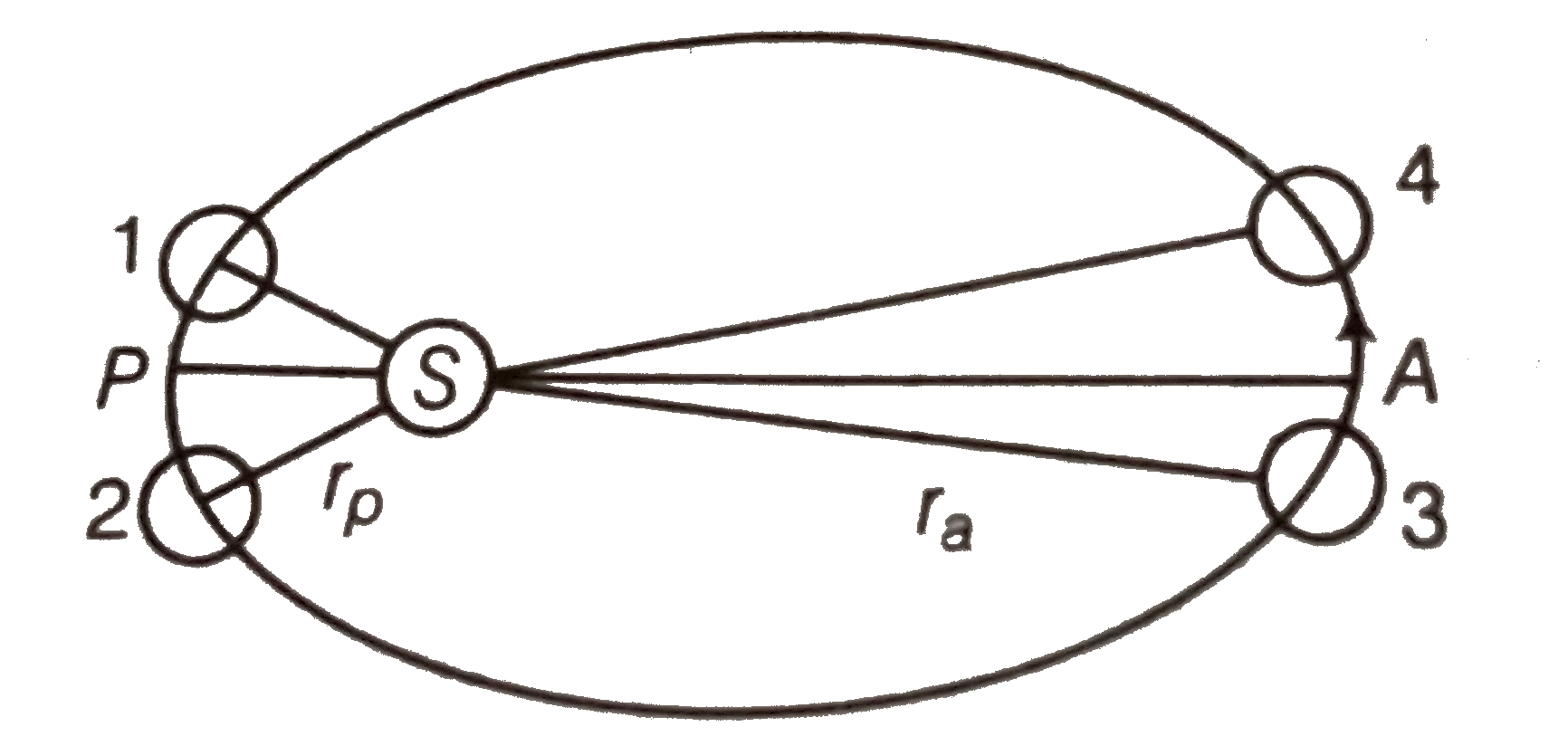Earth's orbit is an ellipse with eccentricity 0.0167. Thus, the earth's distance from the sun and speed as it moves around the sun varies from day-to-day. This means that the length of the solar day is not constant through the year. Assume that the earth's spin axis is normal to its day. A day should be taken from noon to noon. Does this explain variation of length of the during the year ?
Consider the diagram. Let m be the mass of the earth, vp,v(a) be the velocity of the earth at perigee and apogee respectively. Similarly, ωp and ωa are corresponding angular velocities.

Angular momentum and areal velocity are constant as the earth orbits the sun
At perigee, r2pωp=r2aωa at apogee ....(i)
If a is the semi-major axis of the earth's orbit, then rp=a(1−e) andra=a(1+e)....(ii)
∴ωpωa=(1+e1−e)2,e=0.0167 [from Eqs. (i) and (ii)]
∴ωpωa=1.0691
Let ω be angular speed which is geometric mean of ωp and ωa and corresponds to mean solar day,
∴(ωpω)(ωωa)=10691
∴ωpω=ωωa=1034
If ω corresponds to 1∘ per day (mean angular speed), then ωp=1034∘ per day and ωa=0.967∘ per day. Since, 361∘=24, mean solar day, we get 361.034 which corresponds to 24h,8.14'' (8.1'' longer) and 360.967∘ corresponds to 23h59min52'' (7.9'' smaller).
This does not explain the actual variation of the length of the day during the year.
Topper's Solved these Questions
Similar Questions
Earth's orbit is an ellipse with ecentricity 0.0167. Thus earth's distance from the sun and speed as it moves around the sun varies from day to day. This means that the length of the solar day is not constant through the year. Assume that earth's spin axis is normal to its orbital plane and find out the lenght of the shortest and the longest day. A day should be taken from noon. Does this explain variation of lenght of the day during the year?
View SolutionIf the distance of earth form the sun were half the present value, how many days will make one year?
View Solution
Knowledge Check
If there were no atmosphere ,the length of the day on the earth will
AdecreaseBincreaseCremain the sameDnone of theseOn the day the sun is nearest to the earth, the earth is said to be in:
AaphelionBperihelionCapogeeDperigeeIf the length of the day is T, the height of that TV satellite above the earth's surface which always appears stationary from earth, will be :
Ah=[4π2GMT2]⅓Bh=[4π2GMT2]½−RCh=[GMT24π2]⅓−RDh=[GMT24π2]⅓+R
If the distance of earth form the sun were half the present value, how many days will make one year?
View SolutionIf Earth be at one half its present distance from the sun, how many days will there be in a year?
View SolutionIf the earth be one-half of its present distance from the sun, how many days will be in one year ?
View SolutionIf the earth be one-half of its present distance from the sun, how many days will be in one year ?
View SolutionIf the earth is one half its present distance from the sun. How many days will be presents one year on the surface of earth will change?
View Solution

